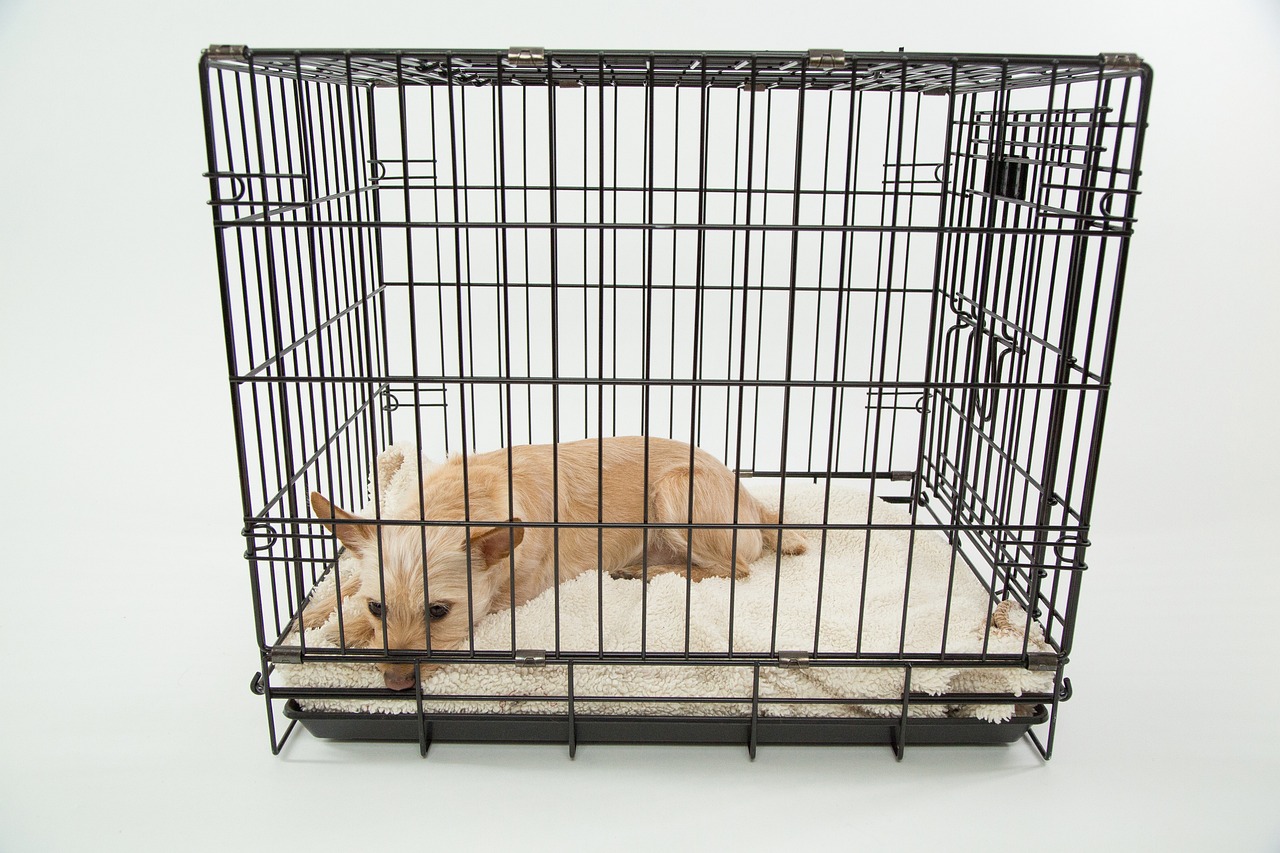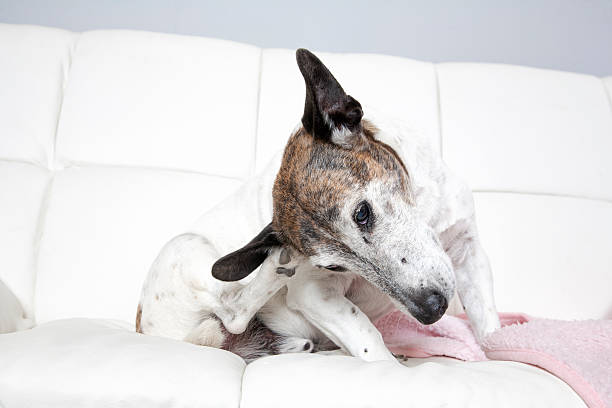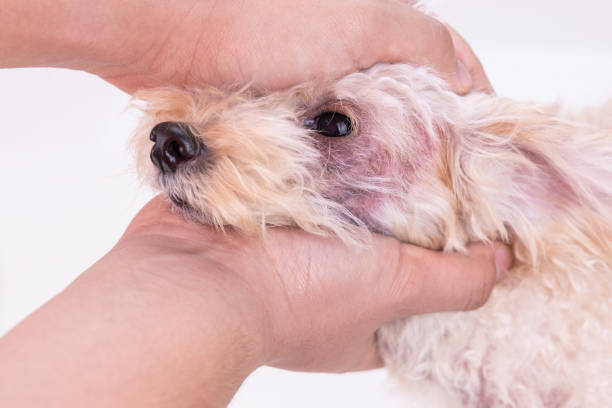Proper aftercare is essential for a dog after being discharged from the vet clinic or hospital post- surgery to ensure appropriate recovery and avoid complications, especially around the surgical wound. Leaving the medical facility doesn’t bring their treatment to an end.
Follow your vet’s instructions for post-operative care. Most will require your recovering dog to be quiet and restricted from strenuous activity to provide ample time for healing. This means no running, jumping, or playing until the vet says it’s okay. Your dog will also need regular checkups to ensure everything is healing properly.
You can do a few things when bringing your dog home to recover from surgery. Ensure they have plenty of water and food available and keep them warm. You can also give them ice cubes or cold water if they feel overheated or nauseous. Call your vet immediately if your dog experiences vomiting or diarrhoea after surgery.
What to Expect After Spaying Surgery
After a dog is spayed, owners should expect changes in their pet’s behaviour. Dogs that were once constantly roaming the house and yard will likely calm down and stay close to home. This is likely because estrogen levels are gone, which can drive dogs to roam. Pets may also become more affectionate after surgery as they no longer want to mate.
Owners should also expect their dog to experience some pain and inflammation in the days following surgery. In most cases, this can be managed with over-the-counter pain meds. Dogs should not be allowed to run or play hard for at least two weeks after surgery. They should be kept from swimming or bathing for at least a week during recovery.
What to Do During Your Dog’s Recovery Period


When they get their dog spayed, most people think the process is over, and they can return to their normal routine. However, doing some things after your dog is spayed would be best to ensure a safe and comfortable recovery.
Feed Your Dog a High-Quality Diet
Aside from dog rest, feeding your dog a high-quality diet after spaying is important to ensure her recovery is as smooth and healthy as possible. Spayed dogs require about 25 per cent fewer calories than those who are not, so it’s important to choose a food that is low in fat and calories.
Unless your veterinarian recommends otherwise, continue feeding your dog the same food she ate before surgery.
Read also: Best Hypoallergenic Dog Food
If your dog has been eating a premium brand of food, switching to a lower-quality diet is unnecessary because she’s been spayed. Doing so could lead to weight gain and other health problems. If you’re feeding your pet food containing chicken or turkey, try to avoid the ones containing corn, wheat, or soy. Too much grain can cause digestive issues and contribute to weight gain.
You may try feeding your recovering dog with the Best Grain-Free Dog Food
Keep Your Dog’s Living Area Clean
Dogs who have been spayed or neutered tend to be cleaner than their unaltered counterparts. They no longer have the hormonal drive to mark their territory with urine or faeces. However, even spayed and neutered dogs can become messy if their living area is not kept clean.
Here are a few tips for keeping your dog’s living area clean after surgery:
- Pick up any food or water bowls when your dog is done eating or drinking.
- Remove any toys or other objects on the dog’s bed that your dog could chew on or play with.
- Clean up any messes as soon as they happen. A quick clean-up will be much easier than dealing with a big mess later.
- Keep the dog bed and crate clean, and wash them regularly. A clean bed and crate will help prevent a mess.
- Please trim your dog’s nails so they don’t break off on the carpet or furniture.
- Don’t allow your dog to jump up onto furniture or beds.
- Ensure the living area floor is not slippery, especially after surgery.
- Use a non-skid surface like carpet or vinyl to avoid falls or accidents.
Provide Plenty of Fresh Water


After your dog has surgery to get spayed, it is important to provide a lot of fresh water. Dogs tend to avoid drinking water after surgery, leading to health problems. Keep a close eye on your dog and make sure they drink plenty of water. You may also want to give her some ice chips or a cold drink to help her stay hydrated.
Be Sure to Keep Your Dog Quiet and Calm after Surgery
After surgery, it is important to ensure that your dog stays in a quiet room to keep them calm. Limit your pet’s activity until you are sure they are completely healed. Your dog should be able to return to normal activities within four days of surgery. Allow your dog to walk slowly until they can walk normally.
Pain Relief
Most dogs recover quickly after a spay operation; pain relief is typically unnecessary. However, if your dog seems to be in pain after the surgery, there are a few painkiller options you can try. Non-steroidal anti-inflammatory drugs (NSAIDs), such as ibuprofen or aspirin, can help relieve pain and inflammation.
You can give your dog NSAIDs directly or put them in her food. Another option is to give your dog a warm compress to help soothe her soreness. A final way to relieve your dog’s pain is a veterinary medicine prescribed as a sedative to keep your dog comfortable during rest.
If you give your dog pain medications after the operation, ensure they don’t take too much. Too much pain medicine can cause vomiting and diarrhoea.
Check Your Dog for Signs of Infection or Illness
Many people may not know your dog needs to be checked for signs of infection or illness after getting spayed. Like any other surgery, there is always a risk of something going wrong. It is extremely dangerous to ignore symptoms.
By being proactive and looking for potential problems, you can help ensure that your dog recovers quickly and smoothly from the spaying surgery of your furry family members.
An infection is one of the most common problems after a dog is spayed. This is why keeping a close eye on your pet for any signs of redness, swelling, discharge, or foul odour from the surgical site is important. If you notice anything abnormal, take your dog immediately to the vet for treatment.


Another issue that can arise after a dog is spayed is an upset stomach or vomiting. Your dog will usually begin to feel the effects of surgery within a couple of days or so, and some dogs may experience nausea. Contact your vet immediately if your dog begins to vomit or has diarrhoea. In most cases, the cause of these symptoms is due to the anaesthesia and pain medication your dog received during surgery.
Lumps and bumps that form in the genital area are not uncommon after a spay or other surgical procedure. Though this is rare, it does happen. Contact your vet immediately if you notice a bump or lump in your dog’s genital area. It would be best to get this checked out as soon as possible.
It is also possible for dogs to develop urinary incontinence after being spayed or neutered. This is a condition in which the dog does not empty their bladder. In extreme cases, this can cause the dog to be incontinent. Again, this is a condition that your vet must monitor.
Complications
Complications after spay surgery are rare, but they can occur. One common complication is an infection at the surgery site. Signs of infection include swelling, redness, drainage from the incision and fever. If your dog exhibits any of these signs, contact your veterinarian immediately.
Another potential complication is a hernia. A hernia occurs when the muscles or tissues cut during surgery weaken, allowing the internal organs to push through the opening. If your dog develops a hernia, it may require additional surgery.
In rare cases, dogs may experience complications related to their heart or lungs after spay surgery. These complications can be serious and may even be life-threatening. Call your veterinarian immediately if your dog experiences any difficulty breathing, chest pain, or an irregular heartbeat after surgery.
Recovery Period
Female dog loses their ovaries, and the uterus is removed during spaying. The surgery is considered a major operation. As with any major surgery, there is some recovery time involved. Most dogs return to their old selves within two weeks of surgery. However, there are some things you can do to help your dog recover as quickly and comfortably as possible.
Following surgery, keep your dog confined to a small area such as a bathroom or laundry room. This will help minimize movement and prevent your dog from getting into trouble. Please ensure the dog bed is comfortable and has plenty of water and food available.


Schedule Regular Checkups with Your Veterinarian
It’s important to schedule regular checkups with your veterinarian after spaying your dog. During these checkups, your vet will be able to ensure that your dog is healing properly and has not developed any complications from the surgery. Additionally, your vet can advise you on caring for your dog during her recovery.



